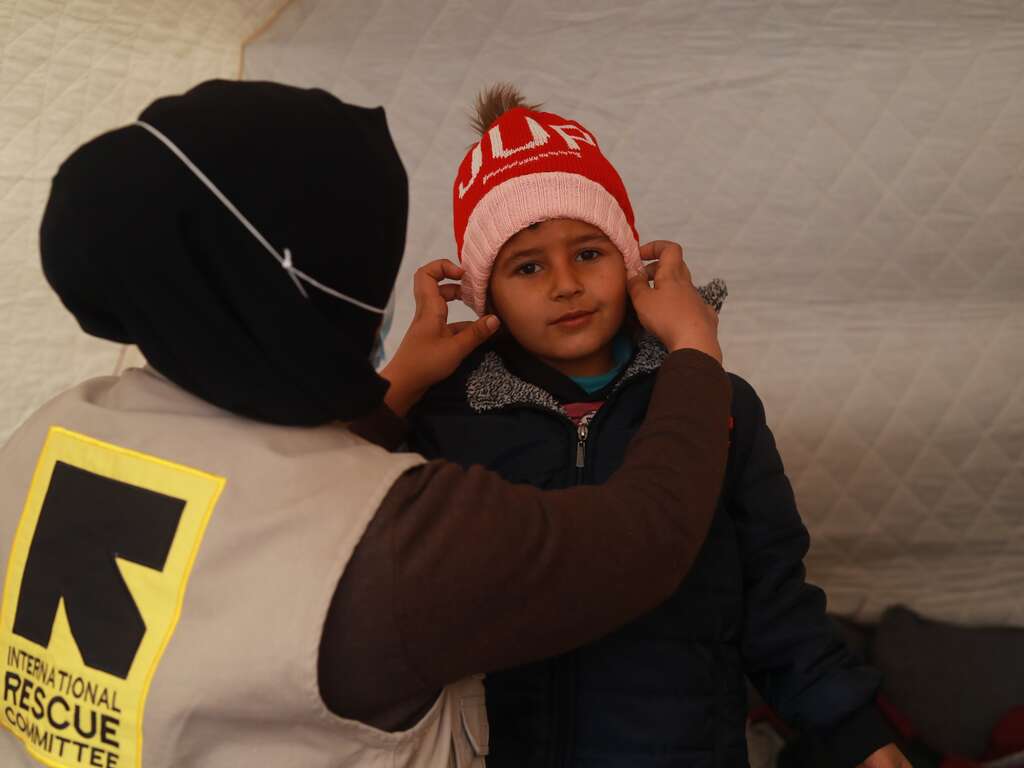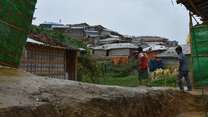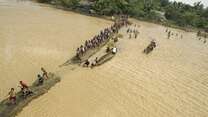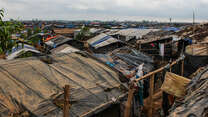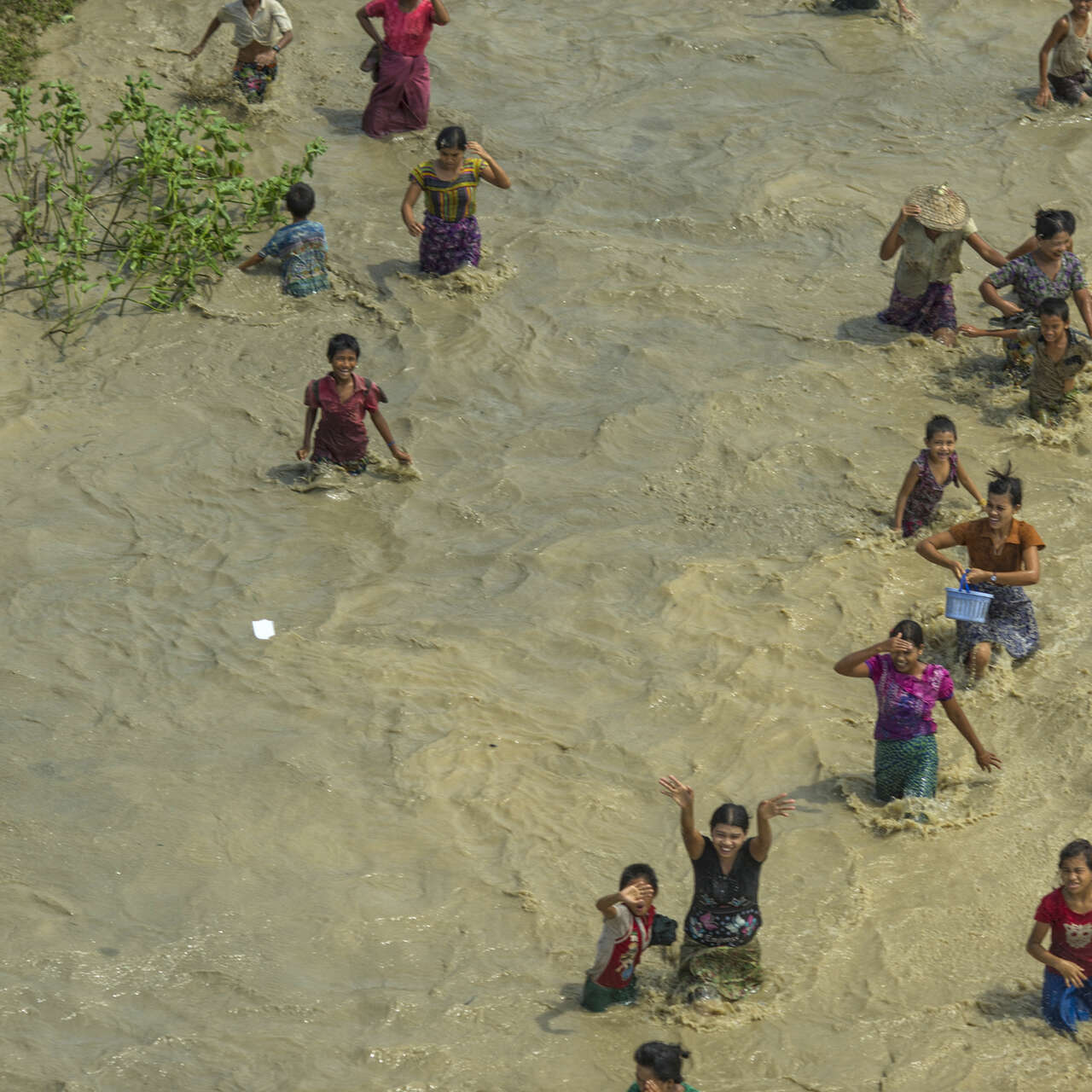
International Rescue Committee (IRC) teams are slowly making their way to isolated communities in Myanmar’s Chin State, a laborious process as roads, bridges and railways have been destroyed. Villages along the Hmung River have been severely damaged; residents are sheltering under makeshift tarps and salvaged blankets.
“All houses were destroyed by flood and storm during the last weeks,” says the IRC’s U Chaing Mana, who has been conducting field visits in villages such as Nang Oo and Auck Hle where monasteries, rice plantations, schools and health facilities have been wiped out. The loss of stored grains and livestock is expected to disrupt the planting season and impact long-term food security.
“We had to trek across unstable river cliffs because the bridge between Le Pong and Ye Chaung has been destroyed by the floods,” he says. The local school, which served as an emergency refuge, has been closed because the roof is unstable. “The village water source has been destroyed so people are drinking from the Hmung River.” The lack of purified water is thought to have caused an outbreak of serious diarrhea in children in Nang Oo and Auck Hle.
The IRC has been distributing emergency supplies, including bottled water, chlorine, water purification tablets and jerry cans, as well as kits with soap and hygiene supplies to manage skin infections. Rice and other food staples must be brought in by foot, often requiring several days of trekking along slippery, flood-damaged tracks.
The IRC has been on the ground in Myanmar since 2008, providing health care, water and sanitation services, livelihoods training, and support for community development projects. We have responded to a series of natural disasters including Cyclone Nargis in 2008 and Cyclone Giri in 2010. Learn more about our response to Cyclone Komen here.
